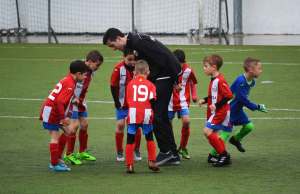
- A new study suggests that social isolation in childhood has a harmful impact on an area of the brain that regulates social behavior in adulthood.
- Researchers from the Icahn School of Medicine at Mount Sinai experimented with male mice to observe the effects of social isolation.
- They found that isolation in childhood 1) led to “excitability” of the prefrontal neurons projecting to the paraventricular thalamus and 2) led to “increased inhibitory input” in other regions of the brain.
- This study helps researchers better understand the neural circuit mechanisms that are involved with isolation in childhood and its adverse effects on sociability in adulthood.
- Researchers are hopeful that, if these findings are replicated in us humans, they will be able to better develop treatment for mental illnesses that are connected to loneliness and isolation, like depression and autism.
- In addition, this research reminds us that our socially isolated world, due to COVID-19, is likely in store for a range of negative mental health implications for years to come.
- Fortunately, researchers are digging in and using their study results to develop new, effective treatments that will ultimately help people live better.
Quick Summary
A new study “A prefrontal-paraventricular thalamus circuit requires juvenile social experience to regulate adult sociability in mice” suggests that social isolation in childhood has a harmful impact on adult brain functioning and more specifically, in an area of the brain that’s responsible for regulating social behavior. In addition to bringing attention to the impact that today’s isolated world might have on children in their adulthood, this study helps us better understand the medial prefrontal cortex and its role in social isolation and impaired social functioning.
Goals and Investigation
Researchers from the Icahn School of Medicine at Mount Sinai experimented with male mice to observe the effects of social isolation. The team discovered that after two weeks of isolation, the medial prefrontal cortex neurons of these male mice failed to activate during social interactions in adulthood. In addition, the team found that:
- Isolation in childhood led to reduced “excitability” of the prefrontal neurons (which are involved with higher cognitive functions like problem-solving and planning), projecting to the paraventricular thalamus (which serves as an intersection for brain reward circuits).
- Isolation in childhood led to “increased inhibitory input” in other regions of the brain, which suggests that there may be underlying sociability shortcomings
Next, the research team wanted to see if they could restore the shortcomings that these adult mice experienced as a result of their social isolation. The researchers used optogenetics, a technique that involves using light to control neurons, in order to stimulate the prefrontal area of the brain. They also used chemogenetics, which involves engineering cells to interact with others. The use of both of these techniques enabled researchers to increase social interaction in these mice quickly.
Implications
This study helps researchers better understand the neural circuit mechanisms that are involved in this transaction of social isolation in childhood, its implications on socialization in adulthood, and the development of mental illness. Loneliness and social isolation plays a huge factor in many of these illnesses, such as autism, depression, and schizophrenia. Researchers are hopeful that, if these findings are replicated in us humans, they will be able to better develop treatment for mental illnesses that are connected to loneliness and isolation.
In addition, this research reminds us that our socially isolated world, due to COVID-19, is likely in store for a range of negative mental health implications for years to come. The good news is that researchers are digging into their findings and using their study results to develop new, effective treatments for the illnesses that are affected by social isolation. In the meantime, be sure to stay connected: schedule regular Zoom dates with friends, check up on family members often, and find other ways to engage with others. And don’t forget about your children—do what you can to help them curb social isolation.
Limitations
This study was conducted on male mice; it will need to be conducted with human participants to see if the same results are yielded.
Sources
Yamamuro, K., Bicks, L. K., Leventhal, M. B. et al. (2020, August 31). A prefrontal-paraventricular thalamus circuit requires juvenile social experience to regulate adult sociability in mice. Nature Neuroscience. Retrieved August 31, 2020 from https://www.nature.com/articles/s41593-020-0695-6
(2020, August 31). Researchers Discover a Specific Brain Circuit Damaged by Social Isolation During Childhood. NeuroscienceNews. Retrieved August 31, 2020 from https://neurosciencenews.com/social-isolation-children-circuit-16935/













